I learned a new Japanese word recently. Baika. The two kanji characters for Ume (plum) and Hana (flower) together read as baika (bye-kah). It means plum blossom, just like sakura means cherry blossom. I asked my friend about this and she said Japanese people still say “ume” for plum blossoms, but when you see the two characters together it is read as “baika.” You always hear the word sakura tossed around. Sakura flavored food, sakura themed souvenirs, pink sakura leaves on Starbucks cups, sakura season is very famous. I’ve rarely heard anyone talk about baika. But plum blossoms are beautiful too.
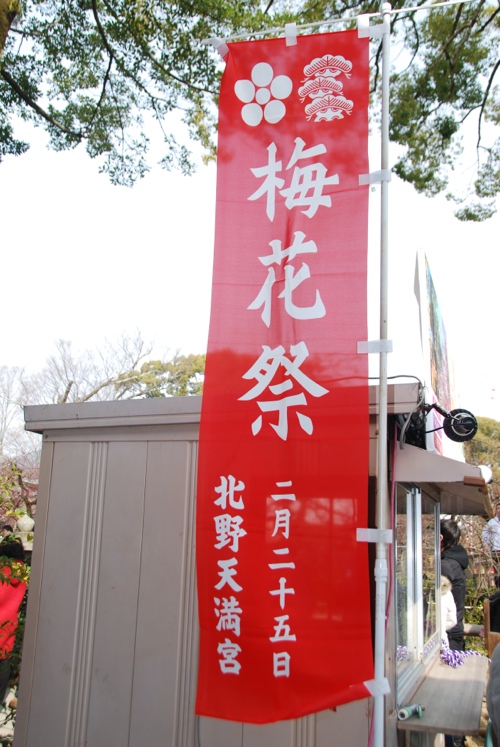 Plum blossoms are the first sign of winter’s end and the beginning of spring time weather. They appear about a month before sakura. They bloom in different shades of pink and white and they have a strong, spicy smell that’s stronger than sakura.
Plum blossoms are the first sign of winter’s end and the beginning of spring time weather. They appear about a month before sakura. They bloom in different shades of pink and white and they have a strong, spicy smell that’s stronger than sakura.
Recently I went to an Ume Matsuri (Festival) at Kitano Tenmangu Shrine in Kyoto. This shrine has a huge garden of plum trees. Every year on February 25th they hold a festival to celebrate the plum blossoms in full bloom. Except this year they weren’t in full bloom yet. They were barely started! The winter weather this year was so cold that it’s causing a delay in the blooming. Yes, I know I’ve been complaining a lot about the cold winter, but even the trees are feeling it. It’s not just me.
Here is the banner for this festival. The top character is “ume (plum).” The second character is “hana (flower).” The third character is for “matsuri (festival).” After that it says the date and Kitano Tenmangu.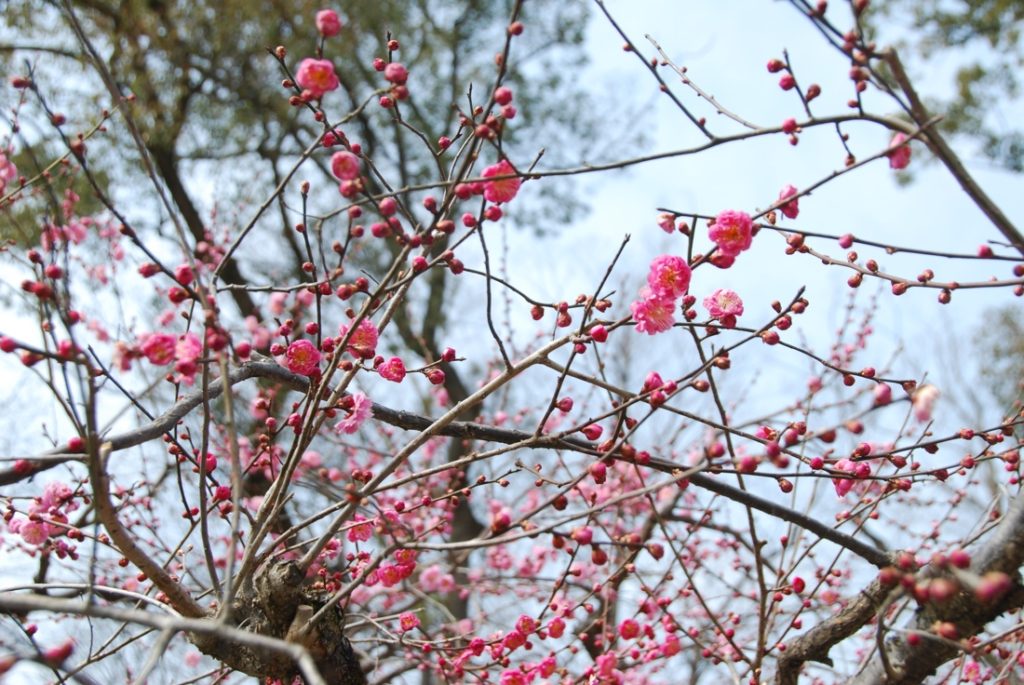 I had to settle for about a half dozen trees with blooms, out of around a hundred trees. There was quite a crowd at the shrine though, the date is set at February 25, so blooms or no blooms the show must go on. There’s a beautiful, annual tea ceremony that happens at this Ume Festival. Women dressed as beautiful Maiko-san (that’s ladies who are Geishas in training) serve matcha tea to the guests. The admission to the tea ceremony is 1500 yen (about $15) and the line is very, very, very long. It was worth the wait.
I had to settle for about a half dozen trees with blooms, out of around a hundred trees. There was quite a crowd at the shrine though, the date is set at February 25, so blooms or no blooms the show must go on. There’s a beautiful, annual tea ceremony that happens at this Ume Festival. Women dressed as beautiful Maiko-san (that’s ladies who are Geishas in training) serve matcha tea to the guests. The admission to the tea ceremony is 1500 yen (about $15) and the line is very, very, very long. It was worth the wait.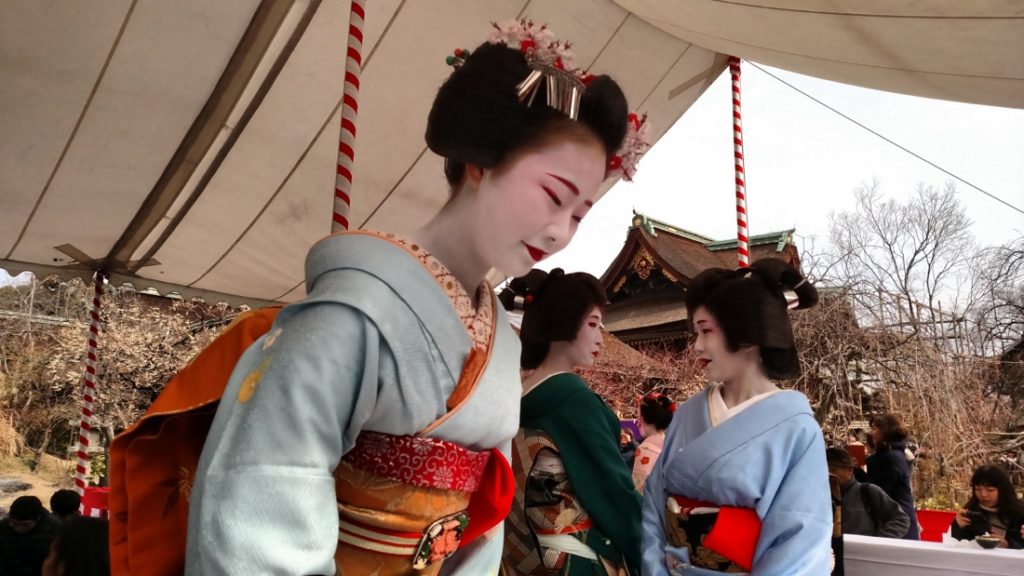
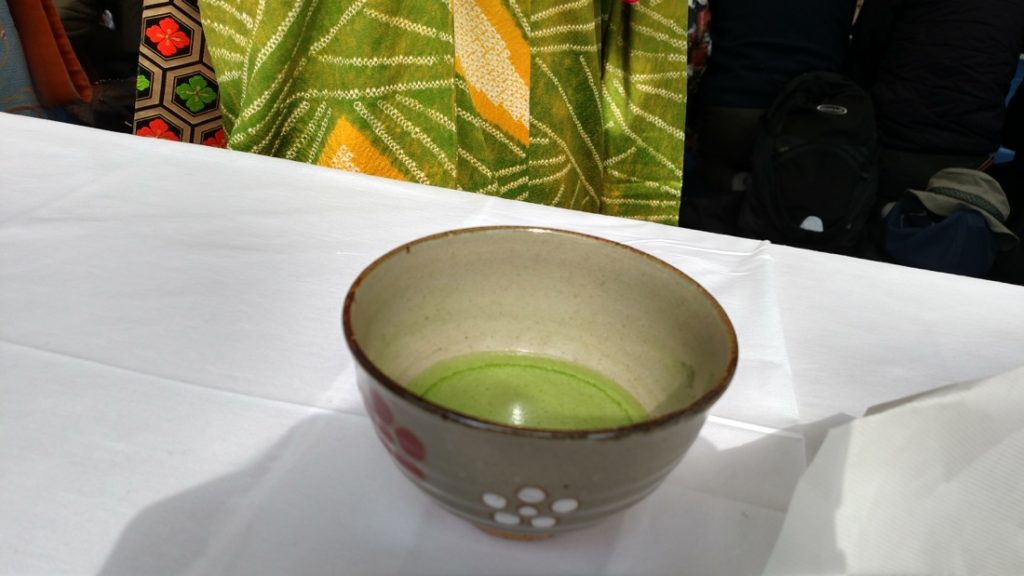 There are two lines. It was confusing for me to figure out what each line was meant for. Clearly one line was shorter than the other and was moving much faster. Every once in a while a man would shout something about the two lines in Japanese and some people would move over to the shorter, faster line. I had to play a guessing game. I could tell other foreigners around me were also trying to figure this out, too. Was it for elderly people and those with small children? Was it for VIPs? Was it for a less interesting experience? I watched the people who chose to go in the shorter line to see if there was any pattern. Finally I remembered that I had read something about inside and outside seating. I wasn’t sure what it meant, but I decided to hop over to the short line. The long, slow line was taking forever. It turned out the long line was for taking off your shoes and kneeling on the ground and being served in the most traditional way while kneeling. The shorter line was for sitting in a chair at a table along the outside border of the ground sitting area. So I sat in a chair!
There are two lines. It was confusing for me to figure out what each line was meant for. Clearly one line was shorter than the other and was moving much faster. Every once in a while a man would shout something about the two lines in Japanese and some people would move over to the shorter, faster line. I had to play a guessing game. I could tell other foreigners around me were also trying to figure this out, too. Was it for elderly people and those with small children? Was it for VIPs? Was it for a less interesting experience? I watched the people who chose to go in the shorter line to see if there was any pattern. Finally I remembered that I had read something about inside and outside seating. I wasn’t sure what it meant, but I decided to hop over to the short line. The long, slow line was taking forever. It turned out the long line was for taking off your shoes and kneeling on the ground and being served in the most traditional way while kneeling. The shorter line was for sitting in a chair at a table along the outside border of the ground sitting area. So I sat in a chair!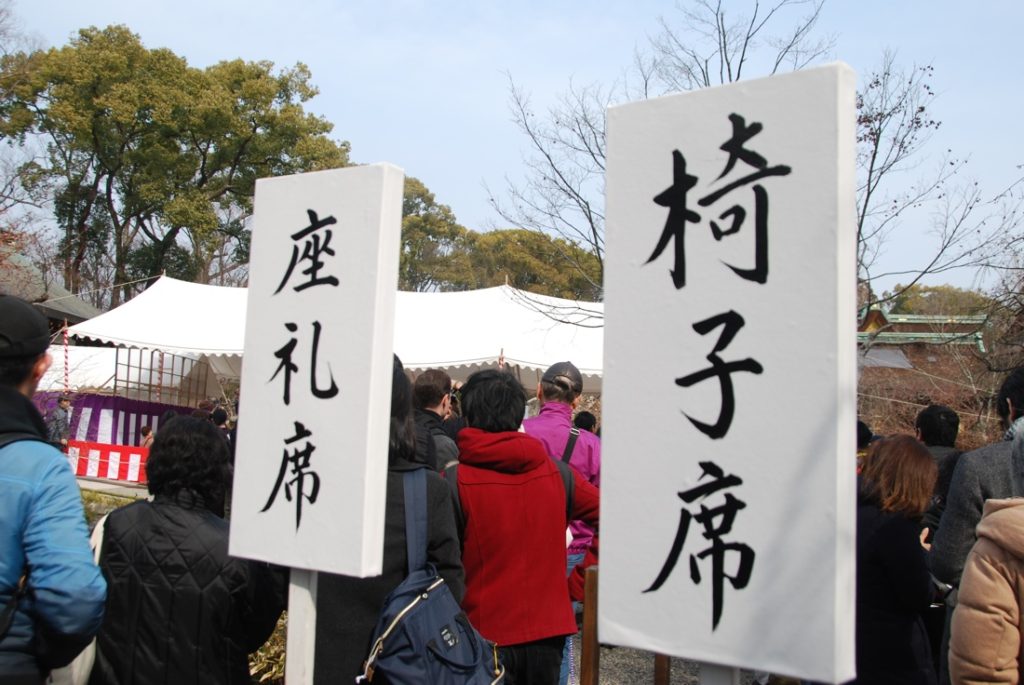 I was given two traditional treats, called okashi, with my admission fee. One was a manju with adzuki bean paste inside. It had a little pink sugar candy with it. The other was a box of two sugar confections in the shape of the shrine’s insignia. I saved the latter and gave it as a gift to my friend Hiroko who is taking formal tea ceremony lessons in Kyoto from a master tea lady.
I was given two traditional treats, called okashi, with my admission fee. One was a manju with adzuki bean paste inside. It had a little pink sugar candy with it. The other was a box of two sugar confections in the shape of the shrine’s insignia. I saved the latter and gave it as a gift to my friend Hiroko who is taking formal tea ceremony lessons in Kyoto from a master tea lady.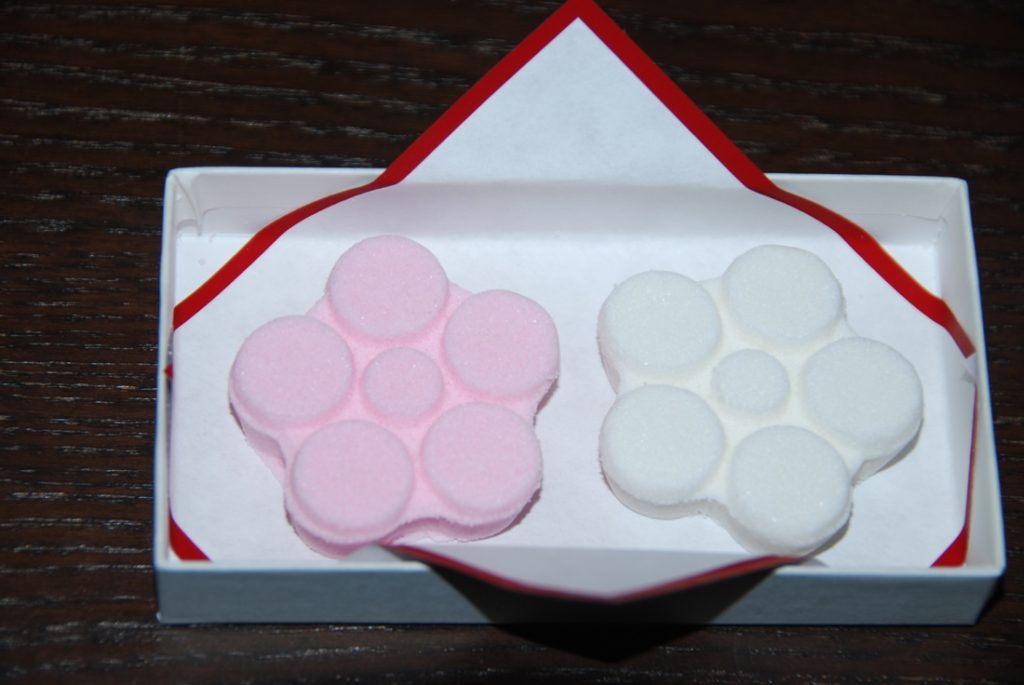
 The proper way to drink macha tea formally is to hold the bowl with two hands. The person’s hands in this photo are holding the bowl properly. Then you sip the tea from the bowl.
The proper way to drink macha tea formally is to hold the bowl with two hands. The person’s hands in this photo are holding the bowl properly. Then you sip the tea from the bowl.
One time, when the five of us all went together to a formal tea ceremony in Gion, Kyoto, we had to crawl inside the tiny tea room. There was a little square hole in the wall and we had to get down on our hands and knees to crawl through. We learned that in ancient times, tea houses were designed this way so that everyone would have to take off all of their bulky, fancy outerwear, weapons, armor, etc. in order to fit through the entrance hole. In this way, everyone entering the tea house was equal. Even samurai and lords were nothing but simple people in the tea house. I love this idea of forced equality.
Beautiful Maiko-san! A rare treat to see.
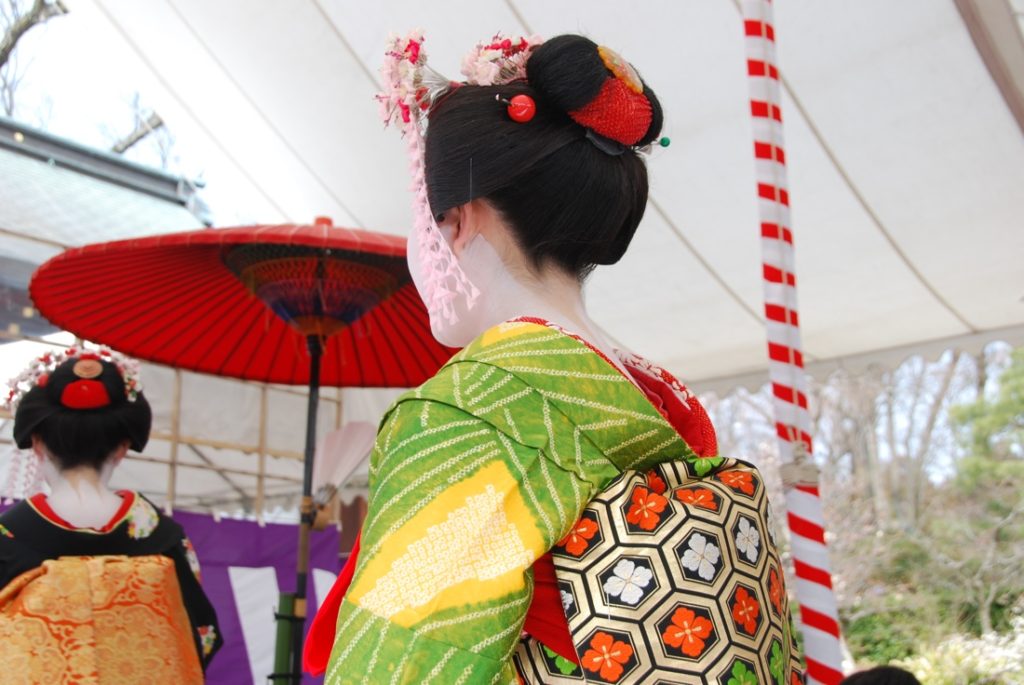
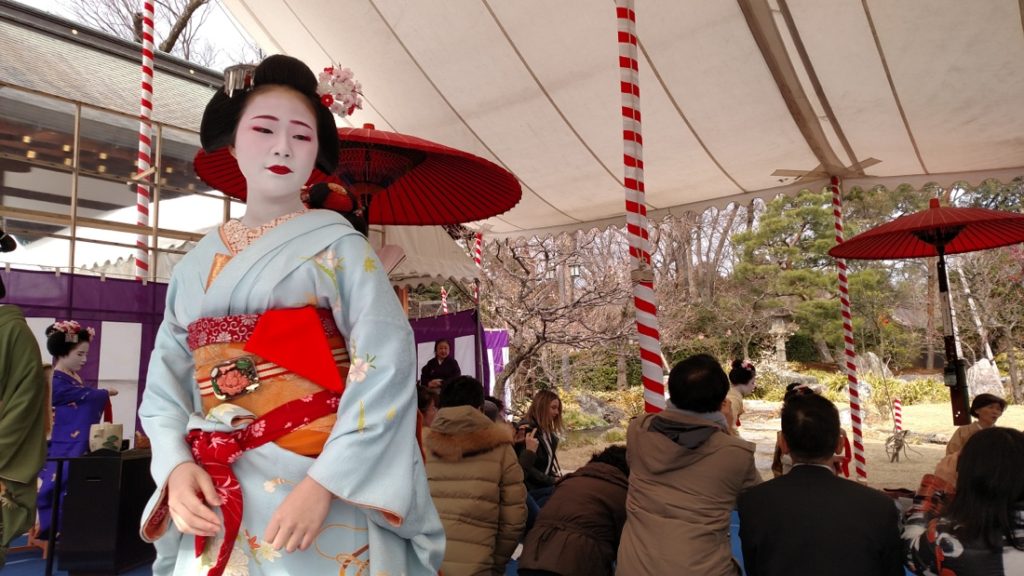 After the tea ceremony I walked around Kitano Tenmangu. This shrine is unique because it was built to honor a real person: Sugawara no Michizane. He was a scholar and politician during the Heian period. He is fondly known as the “god of academics.” According to the Kitano Tenmangu website, “There are as many as 12,000 shrines that are dedicated to Sugawara no Michizane in Japan, but the Kitano Tenmangu Shrine is the origin and the main shrine. To this day, many students that pray for passing scores on examinations and persons who wish for the improvement of their abilities come here to visit.”
After the tea ceremony I walked around Kitano Tenmangu. This shrine is unique because it was built to honor a real person: Sugawara no Michizane. He was a scholar and politician during the Heian period. He is fondly known as the “god of academics.” According to the Kitano Tenmangu website, “There are as many as 12,000 shrines that are dedicated to Sugawara no Michizane in Japan, but the Kitano Tenmangu Shrine is the origin and the main shrine. To this day, many students that pray for passing scores on examinations and persons who wish for the improvement of their abilities come here to visit.”
When students visit this shrine they purchase “e’ma,” little wood placards, and write their wish on it, usually relating to the desire to pass an important exam, especially high school or college entrance exams. Here is a photo of the overwhelming number of e’ma left at this shrine. Most shrines have e’ma hanging somewhere. But I have NEVER seen this many at one time.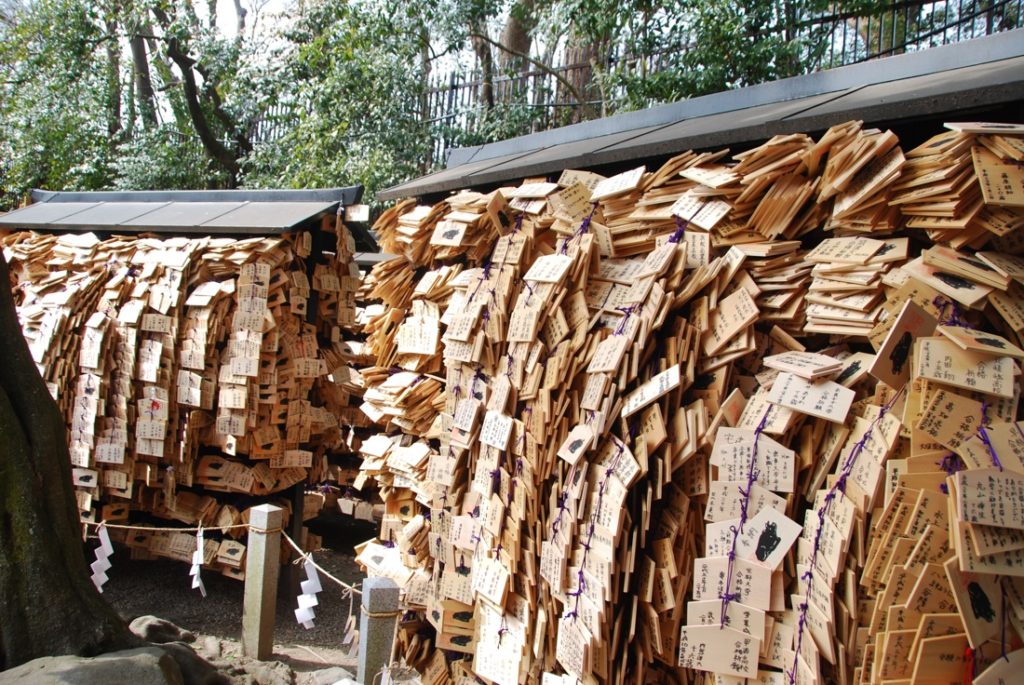 Scenes from Kyoto’s Kitano Tenmangu Shrine
Scenes from Kyoto’s Kitano Tenmangu Shrine
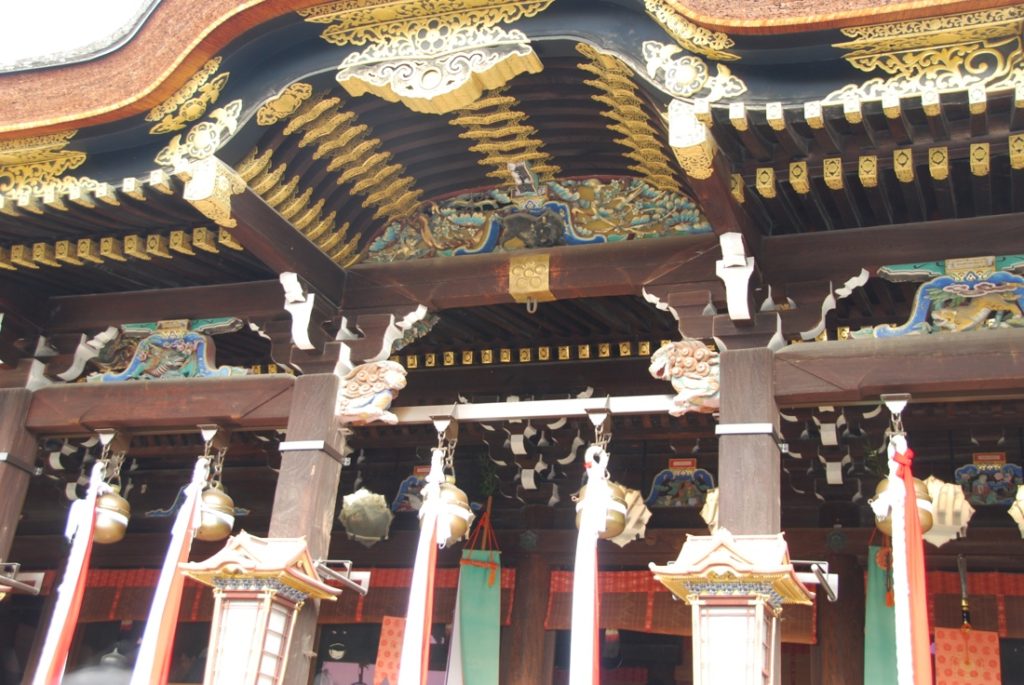

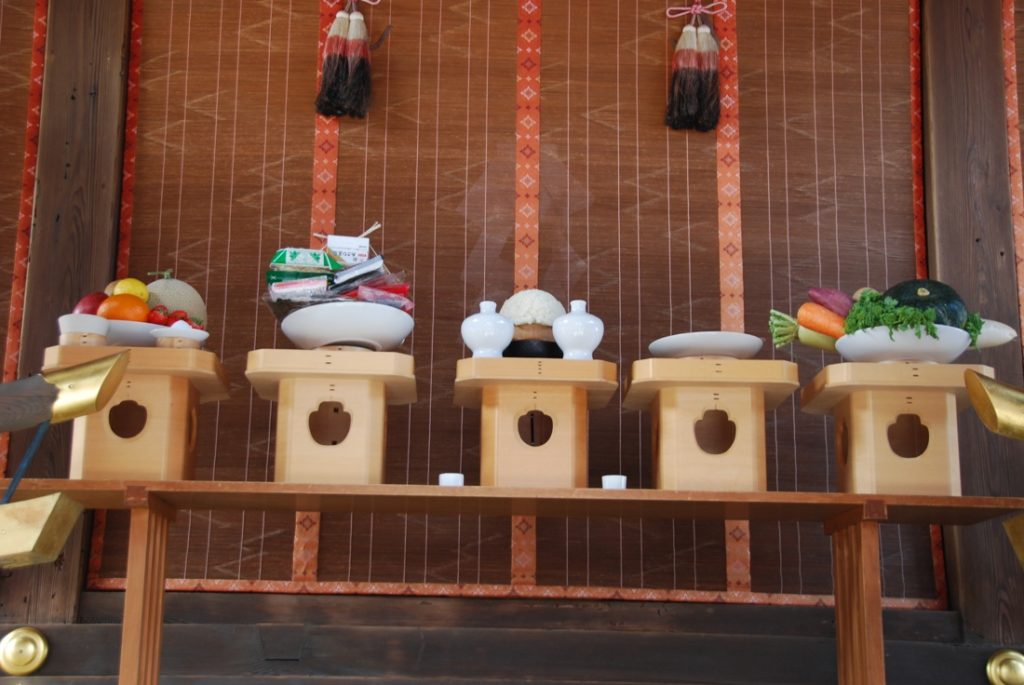 After I was done looking around, I walked outside to the large flea market going on. As luck would have it, on the 25th of every month there is a very large flea market on the outside grounds of this shrine. I came here by myself, so it was fun to wander around aimlessly, without the stress of bored or hungry kids complaining at me. I bought a few random trinkets and souvenirs to bring home.
After I was done looking around, I walked outside to the large flea market going on. As luck would have it, on the 25th of every month there is a very large flea market on the outside grounds of this shrine. I came here by myself, so it was fun to wander around aimlessly, without the stress of bored or hungry kids complaining at me. I bought a few random trinkets and souvenirs to bring home.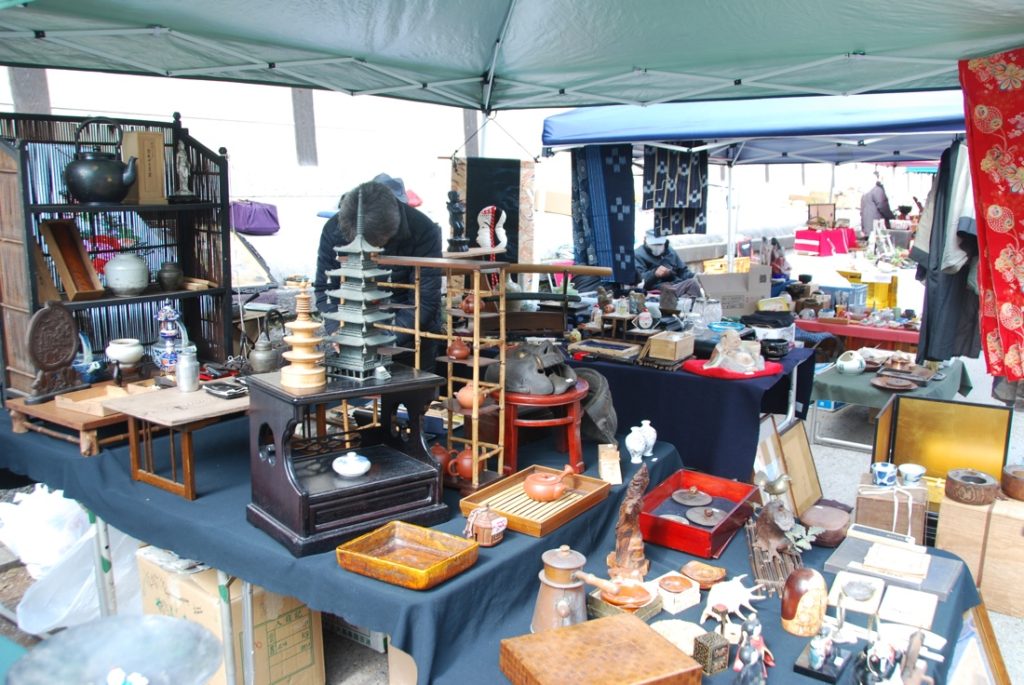
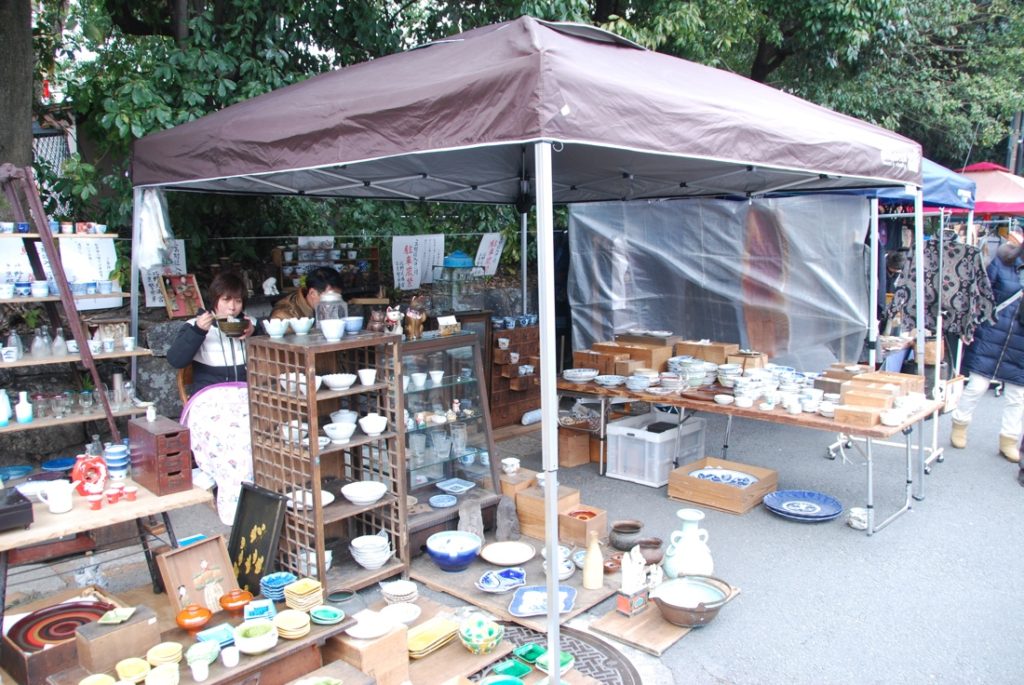 Even though this is a flea market, which I associate with bargains, the pottery and tableware in this photo above was very expensive. Many items here were listed as 20000 yen, which is around $200 USD. I found a nice set of five tiny plates for soy sauce dipping and other sauces or small sides. They were 25000 yen! Around $250 USD, so I passed.
Even though this is a flea market, which I associate with bargains, the pottery and tableware in this photo above was very expensive. Many items here were listed as 20000 yen, which is around $200 USD. I found a nice set of five tiny plates for soy sauce dipping and other sauces or small sides. They were 25000 yen! Around $250 USD, so I passed.
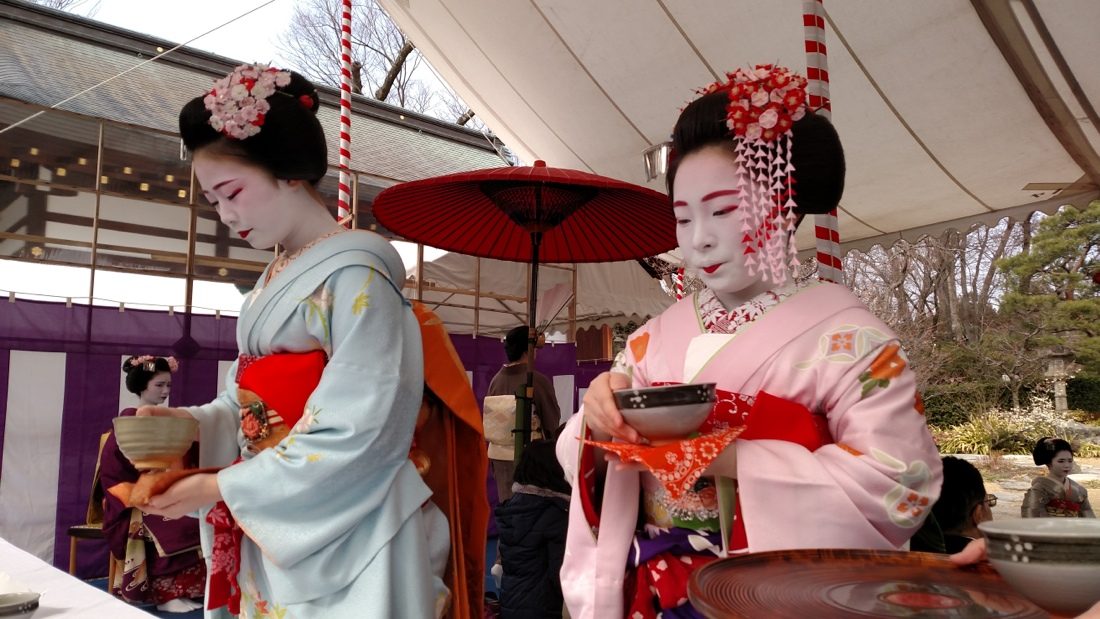
Comments (0)